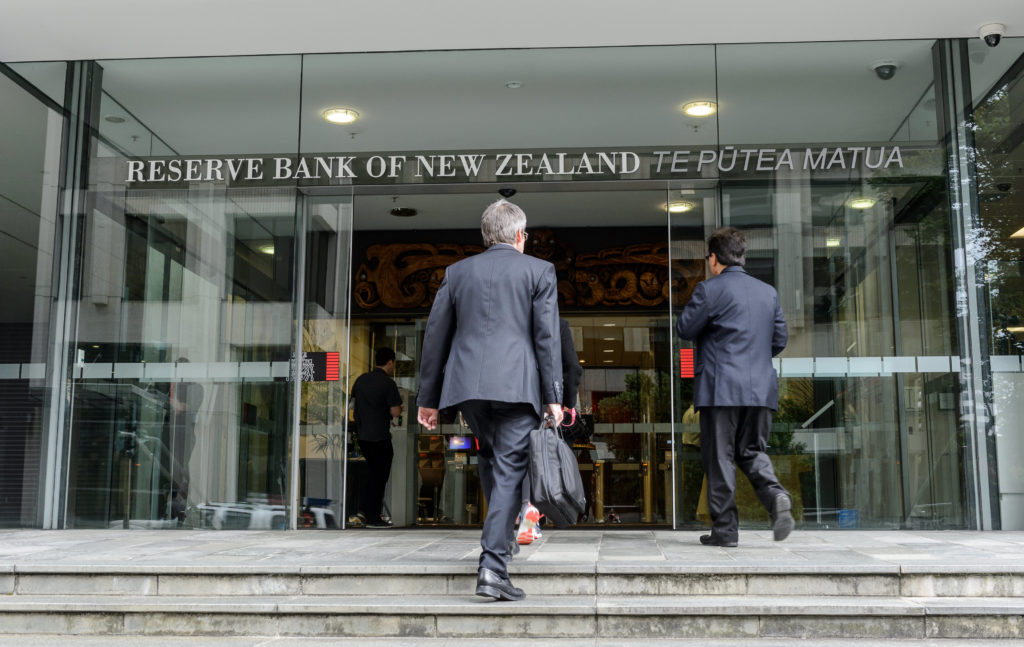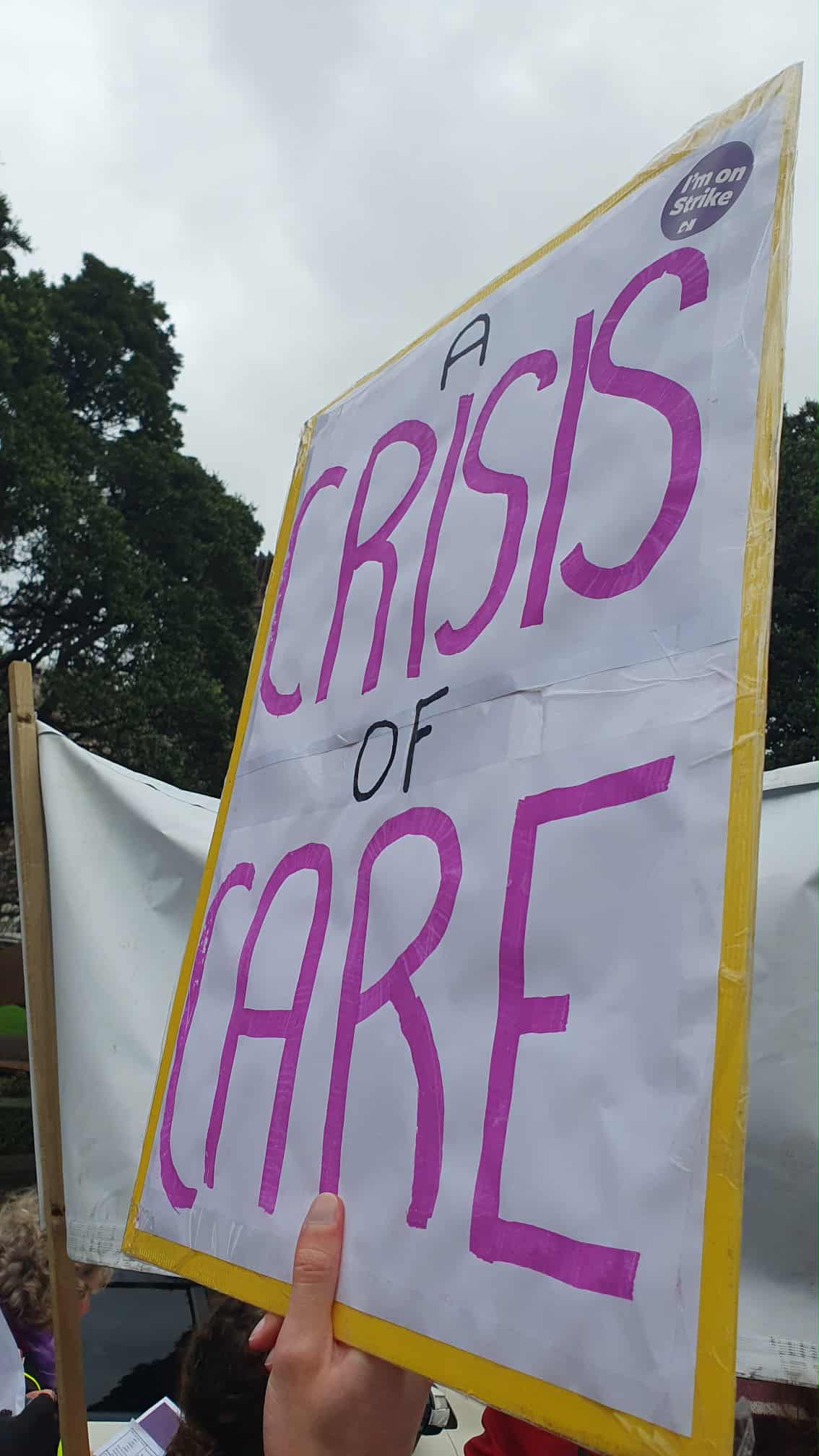A series of articles for this website since last August have tracked the developing cost of living crisis and how in Aotearoa some groups of workers have responded. A clutch of recent economic data demands an update.
Inflation
In the US the annual rate of increase in consumer prices rose to 8.5 percent as of end of March. In the UK, it was 7.0 percent; India, 6.95 percent. In New Zealand CPI rose by 6.9 percent, also as of end of March. In the OECD area year-on-year inflation to end of March stood at 8.8 percent. In the Eurozone area CPI climbed to 7.5 percent as of end of April. Inflation is rising globally, now reaching areas comparatively untouched before, such as South Korea and Australia. Australia has just recorded a big jump in consumer prices: 2.1 percent in the January-March 2022 quarter alone. Inflation is still low in Japan and China, but is edging upwards in both cases.
In parts of the Third World soaring prices are causing real hardship by putting foodstuffs out of reach. In Pakistan annual inflation has reached over 12 percent; in Sri Lanka, 21.5 percent. No wonder the cost of living is feeding political instability.
Monetarism
In the neoliberal age, the standard response to rising inflation under monetarist economic doctrine is to cool economic activity, if necessary to the point of inducing a recession. The doctrine is called monetarism because its instruments are policies to regulate the supply of money in the economy. That regulation is carried out by the actions of central banks to set wholesale lending interest rates and to the control of the amount of money in circulation.
Under monetarist economics central banks respond to inflation by raising interest rates. But that alone is not enough. Monetarism also requires that governments restrict economic activity by holding back public spending. The desired effect sought by monetarists is to create unemployment and thereby undermine the ability of employed workers to increase their pay in line with the cost of living.
Monetarism is best seen as a right-wing political strategy to structure a national economy in favour Big Business at the expense of the working class and the ruination of small businesses. Monetarist economists and politicians have declared class war.
Monetarism as purely an economic doctrine does not work. Central banks are supposed to be able to keep annual inflation down to around 2 percent by using the levers of interest rates and money supply. Since mid-2021, when the current bout of high inflation began, monetarist economic measures have not worked. The monetarist economists that staff central banks have a touching belief in their powers to hold inflation down. Hence, in their forecasts, they consistently underestimate the rate and duration of inflation, only to be contradicted by reality. So, to give just one example, the Reserve Bank of New Zealand told us last October that inflation would increase to over 4 percent then return to 2 percent. To save face, reserve bank chiefs are now blaming the war in Ukraine for high inflation, conveniently forgetting that inflation was well in train before the 24 February invasion.
Interest rates
Central banks are taking evermore drastic measures. On 5 May, the UK’s central bank, the Bank of England, raised interest rates by a full 1 percent: no more messing with 0.25 percent increases. Three members of the bank’s monetary policy committee wanted a 1.25 percent hike. It was the fourth meeting in a row at which the committee decided to raise rates.
On 4 May, the US’s Federal Reserve also junked another 25 basis points rise in rates, going for a 0.5 percent rise instead, the sharpest rise since 2000.
Since the beginning of the current bout of inflation the Reserve Bank of New Zealand has raised the Official Cash Rate (i.e. the base rate for wholesale inter-bank borrowing) four times so far. It too has accelerated from 25 basis points rises to a 0.5 percent rise in April.
These interest rates, aimed at cooling demand in the economy, are having a direct effect on working class people who have mortgages. If they are on variable rates, their repayments are being bumped up at each move in base rates. If on a fixed rate, they will face a sharp rise in repayments at the end of the fixed term. Indirectly, private tenants are affected when landlords pass on their extra borrowing costs.
Rising unemployment
In the neoliberal era central banks are charged by governments to keep inflation to, typically, around 2 percent. Implicitly, if action is taken to cool the economy there will be an increase in unemployment. In Aotearoa, the Reserve Bank makes no bones about it. An increase in unemployment is a calculated aim. The bank’s report of the April meeting of the Monetary Policy Committee states that ‘Employment is above its maximum sustainable level and labour shortages are impacting many businesses. … Members noted that inflation is above target and employment is above its maximum sustainable level. As such, the Committee confirmed that further increases in the OCR are needed in order to meet their mandate.’ So far, from the point of view of the monetarists, unemployment has remained stubbornly low at 3.2 percent. That will change.
Pay deficit
The unspoken objective of neoliberal policy towards inflation is to reduce the share of national wealth to the working class. Pay becomes the key battle ground. On 4 May, Statistics New Zealand published its latest pay information. In the year to March pay increased by 3.0 percent, well behind the 6.9 percent rise in prices. Working class living standards are on the slide.
Growth slowdown
In Aotearoa, GDP growth over 2021 was a healthy 5.6 percent, a bounce back from contraction in 2020. It remains to be seen what the effects of Reserve Bank actions will have had on GDP when the statistics are released in June. On a world scale, however, monetarist efforts to cool national economies are having an effect, but not on inflation. US GDP actually contracted in the first quarter of this year. In the Eurozone GDP growth was only 0.2 percent in that quarter. In France, GDP stood still. Even in China growth slowed. Andrew Bailey, the Governor of the Bank of England has warned of recession by the end of the year – at the same time he and his committee raised interest rates to make recession happen.
British economist Michael Roberts concludes his 3 May blog, ‘It’s not looking good for 2022’ saying ‘In sum: slowing growth, rising inflation and interest rates, falling financial returns; rising risk of defaults on loans; and war.’
Pay disputes
The cost of living crisis brings a sharpening of the class war. In previous blogs in this series, I have reported on a run of pay disputes in Aotearoa between November and February. Whilst currently the number of pay disputes appears to have receded, those outstanding include large workforces in the public sector.
The New Zealand Nurses Organisation and the PSA are currently consulting members on whether to mount a legal challenge to the DHBs offering of a lump sum, rather than full back pay, in a pay equity settlement.
Ten thousand PSA members at DHBs – allied, public health, scientific and technical professionals – who rejected the DHB’s initial offer by over 90 percent and are to ‘work to rule’ from 9 to 20 May and hold a 24 hour strike on 16 May.
E tū, NZNO and PSA unions representing 65,000 care and support staff are disputing the government’s offer of an approximately 2.5-3 percent pay rise over 18 months. The offer is well under half the rate of current inflation, and who knows what it might be in 18 months’ time.
Rail Maritime and Transport Union members working for Auckland One Rail have voted for strike action in support of their claim.
Vacuum of union leadership
These disputes, and others that have been settled, show that unionised Aotearoa workers are prepared to take action to defend their standard of living. However, there is a vacuum of leadership in the union movement. The titular head of the movement, the Council of Trade Unions, has been missing in action over the cost of living. While we are in the throes of cuts in pay in real terms there has been no leadership – no marches, rallies, conferences – to build resistance. Faced with a golden opportunity to get unions into unorganised workplaces the union tops behave as if there is no crisis at all.
Test of Labour government
The cost of living crisis is a test of our Labour government. Jacinda Ardern’s governments since 2017 have passed reforms, taken progressive positions, and made left-wing gestures. Yet it has operated within a neoliberal framework that has severely restricted genuine radicalism. There has been no real action on climate change, no real state intervention to build houses, and little action (acknowledging some) to redress an appalling disparity in wealth that leaves the worst off, disproportionally Māori and Pasifika, in dire circumstances. Schools and health services have remained drastically under-funded.
Members of the government would, I’m sure, very much like to deliver much more for the ordinary people of Aotearoa. The government is pulled in opposing directions: adherence to the neoliberal framework and measures to create a fairer society. That contradiction explains the character of Ardern’s governments. When it comes to an economic crisis that contradiction becomes fully exposed; it’s one or the other it. Faced with that choice of siding with working class interests or harsh measures dictated by the monetarists… I think we know which way Labour is bound to go.
Labour is accepting monetarist measures in response to inflation. How else can it be explained that a Labour government is deliberately imposing wage cuts in real terms on public sector workforces? How else can it be explained that it is allowing the state-owned Reserve Bank to deliberately raise interest rates, slow the economy and increase unemployment? A reformist government worth its salt would take back the Reserve Bank to direct government control, reversing the 1989 handover to independent monetarist control. I can’t see Labour doing that, or using state intervention to control prices.









